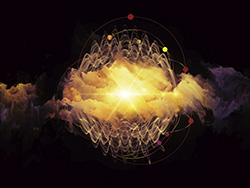Experimental characterisation of Bose gas phenomena
The discovery and explanation of the fractional quantum Hall effect (FQHE) describing the behaviour of electron gases in certain magnetic field conditions led to a Nobel Prize in Physics in 1998. However, the discovery has created many new questions that remain unanswered and it is an important area of research in condensed matter physics.Development of an experimental paradigm enabling scientists to test new hypotheses was the focus of the EU-funded project 'Quantum Hall states in ultracold atomic gases' (FLUX LATTICES). Bose gases are composed of uniform particles of integer spin. When supercooled, the particles create a new form of matter called a superfluid. However, atoms are neutral and couple to magnetic fields in different ways than charged electrons do.In order to study the FQHE related to electrons in a magnetic field, the team explored two approaches based on creation of artificial gauge fields. Application of the fields first required characterisation of the static and dynamic behaviour of a 2D quantum fluid. Scientists conducted pioneering work leading to a description of superfluid behaviour and a publication in Nature Physics. In addition, they implemented a novel experimental method allowing measurement of the equation of state of the fluid relating properties such as pressure, temperature mass and volume. The manuscript describing this work and the results is currently being prepared for publication.The ability to cool, confine and manipulate atoms is at the core of experimental research on ultracold atomic gases. Cold atoms are conventionally confined in harmonic potentials (harmonic traps). Researchers replaced this trap with a box potential (box trap) enabling the creation of arbitrary geometries such as two neighbouring traps. The experimental system allowed investigation of quasi-long-range coherence and exciting new insight into the physics of 2D Bose gases.FLUX LATTICES conducted experimental investigations of some of the most important open questions in condensed matter physics. The pioneering work accomplished within the first 16 months led to a faculty position for the Marie Curie Fellow and laid the foundations for promising future research at the host university.



